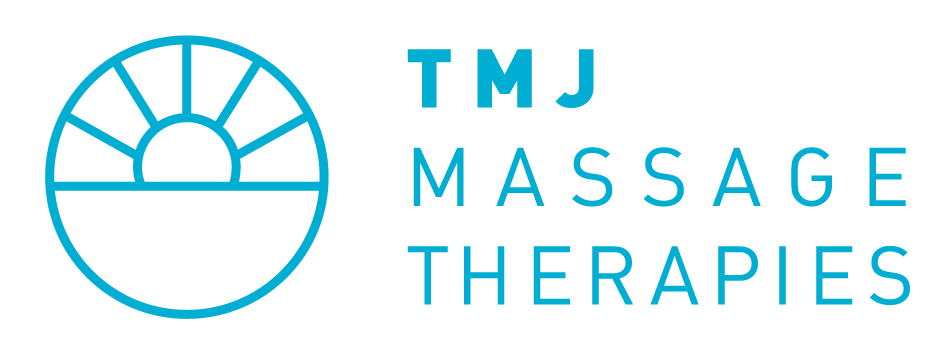TMJ, its symptoms, causes and treatment.
““ Helen has worked with many complex and resistant TMJ problems, bringing her clients great relief and return to full pain free jaw function using safe and gentle techniques.” ”
What is TMJ Dysfunction?
TMJ stands for Temporomandibular Joint. These are the two joints that connect your jaw to your skull. When these joints are out of place, they can cause many problems, such as:
Clicking or popping of the jaw joints
Pain in or around the jaw joints
Locking or limited opening of your mouth
Muscle spasm goes hand-in-hand with displaced jaw joints. Because the nerves and muscles are so complex in this area, when these muscles are in spasm the problems can be far-reaching
The temporomandibular joints are the hinges located on either side of the face that connect the lower jaw to the skull. Each temporomandibular joint has two sections that permit the hinge and gliding actions needed to open the mouth widely.
The joints work in concert with the facial bones and five pairs of muscles to allow opening and closing of the mouth and forward, backward, and side-to-side movements of the lower jaw. Any disturbance of this facial symphony can trigger the cycle characteristic of TMJ dysfunctions: muscles and joints not working together correctly, causing muscle spasm, resulting in pain, muscle tenderness, and tissue damage.
There are 3 types of pain associated with TMJ Dysfunction and the treatment needs to be approached differently from one another.
Internal derangement of the TMJ, such as a disc that has become displaced, an injury to the condyle or dislocation of the TMJ
Arthritis in the joint itself, which can be degenerative or inflammatory in nature
Myofascial pain, which is pain to the muscles surrounding and controlling the joint. This is the most common source of TMJ pain and can be treated successfully through massage therapy
Symptoms of TMJ Dysfunction
TMJ can be mild, moderate or severe. It can be a temporary pain, intermittent pain or a steady pain that can last for many years. Research suggests that it is experienced more in women but no one knows why this is the case.
Common symptoms include:
Headaches
Pain behind the eyes.
Dizziness, nausea.
Earaches or ringing of the ears (Tinnitus).
Clenching or grinding of the teeth.
Neck, shoulder, or back pain.
Numbness, or tingling of the fingers.
Hearing loss.
Feeling 'tired' in the facial area.
Clicking sensations when opening & closing the mouth
Dull aching sensation in the face.
What causes TMJ Dysfunction?
Unfortunately we still don’t know what causes TMJ Dysfunction. Many believe symptoms arise from problems with the muscles of your jaw or with the parts of the joint itself.
From my personal research and client portfolio, TMJ Dysfunction is caused by:
Whiplash and a history of headaches or head and neck trauma.
Bruxism - grinding or clenching your teeth
Blows to the head.
Injury to the jaw or muscles of the jaw.
Forward head posture.
Repressed anger, rage, bitterness and suppression of the tender emotions.
Movement of the soft cushion or disc between the ball and socket of the joint.
Arthritis in the joint.
Stress, which can cause you to tighten facial and jaw muscles or clench the teeth.
It's important to note that in most cases, it is hard to narrow TMJ Dysfunction to one cause. It's possible that a variety of causes converge together to cause the problem and that there just isn't one cause affecting the joint.
What is Myofascial Release?
Myo = muscle
Fascia = the main connective tissue in the body
Release = to let go, ease pressure
Myofascial release is a technique that has been developed by medical doctors, osteopaths, physiotherapists and massage therapists since the 1940s. Fascia is the main connective tissue in the body. Fascia surrounds every cell, muscle, bone, nerve, blood vessel in the body, creating a three-dimensional web which spreads from head to toe.
Structurally fascia consists of protein fibres, collagen for strength and elastin for flexibility, and a fluid ‘packing material’ which is found in all body tissues. In its normal state fascia is fluid and pliable, allowing full, pain-free movement.
However, fascia is vulnerable to trauma from accident, infection, injury, surgery or repetitive movement. Such trauma causes fascia to tighten, solidify and develop restrictions. Over time these myofascial restrictions can lead to poor biomechanics, altered structural alignment, compromised blood supply and pain.
“Myofascial Release opens and re-hydrates the human system for the coherent flow of frequency, vibration, information and organisation necessary for the health and quality of life.”
Myofascial release is a non-invasive, gentle hands-on soft tissue technique that works on the fascia to release restrictions. The technique involves applying a gentle stretch to the restricted fascia until resistance is felt. Sustained pressure is then applied for 90-120 seconds or more until the therapist senses the first myofascial releases, which are sometimes accompanied by heat and reddening of the skin as blood flow is restored. As these releases occur the therapist can follow the trail of further restrictions until the tissue becomes softer and more pliable. These releases take the pressure off pain sensitive structures such as nerves and blood vessels, and restore alignment and mobility to muscles and joints.
Treatment of TMJ Dysfunction
At TMJ Massage Therapies, Helen has developed a bespoke massage treatment focusing primarily on the TMJ, face, neck & head – using a combination of TMJ Myofascial Release techniques, trigger point therapy and remedial massage to help relieve fascial and TMJ pain. The treatment is subtle, relaxing and effective.
As it is difficult to determine the actual cause of TMJ Dysfunction, there is not one set cure that will work for everyone. Helen encourages clients to explore some of the many healing treatments below, to find a combination that is the most effective and suitable for them.
TMJ Massage Therapies sessions
YOGA
Chiropractic Treatment
Craniosacral Therapy
Splint or night guard to prevent clenching and grinding of the teeth.
Muscle relaxants
Injection Relief
Acupuncture

